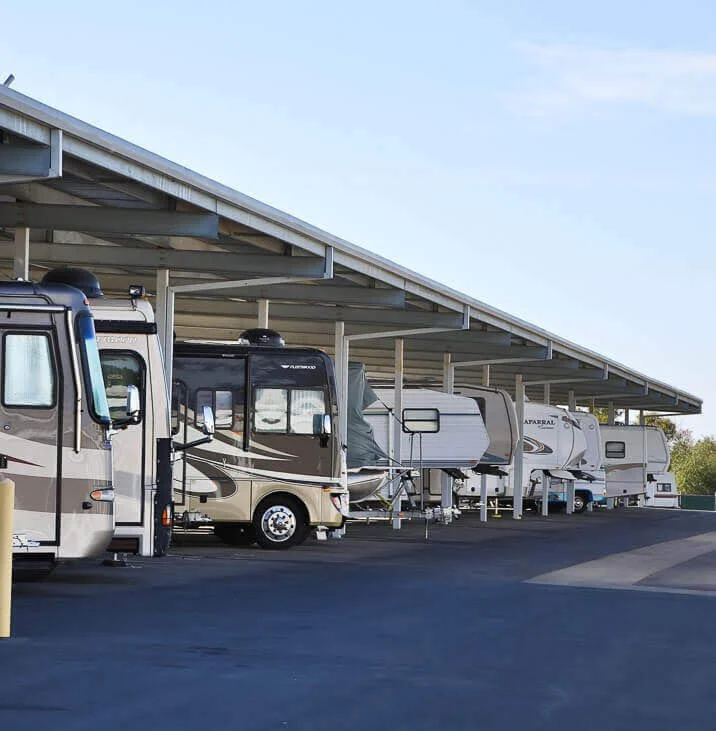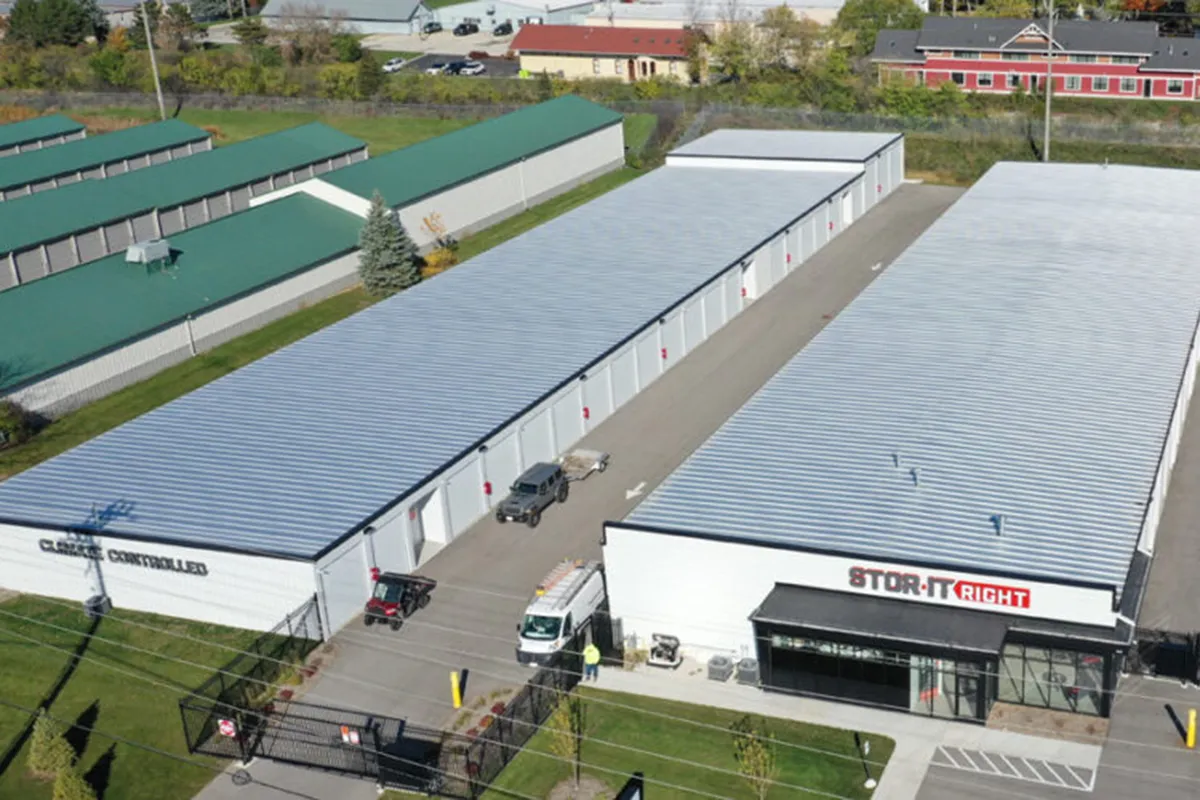If you have decided that you want to invest in your own self-storage project, creating a construction budget is going to be one of your first tasks. It will also be ever consuming.
Many new developers end up with a classic chicken and egg problem. You want to know if a project is worthwhile before investing in design work. But you need to invest in design work before your vendors/contractors can give you a solid price for their work.
The solution here is that you need to understand who you are creating a budget for. In the early stages of planning, you are creating a budget for your own decision making. To create this budget, you’ll need to have a rough vision of what you are creating. Your goal in creating this rough budget is to decide if you are willing to invest the money in the design work to launch your business.
Rough budgeting – Questions to ask yourself before you begin
- How would I like to manage my property? If you expect to run an unmanned property, you will very likely need to plan for a location to install (and budget for) a self-service kiosk and gate. If you expect to have a manager now or in the future, you’ll need to budget for an office or at least plan to leave space to add one later. Your management style will impact your facility design and your management expenses.
- What kind of storage facility do I expect to build? Will it be typical drive up units, or are you targeting a market where climate controlled or multi-story is expected? Or maybe you want to focus on large units for boat and RV owners. Understanding your customer is going to help you to understand approximately what kind of buildings you will construct, which impacts your cost and land usage.
- What are my priorities for cash flow? If you are well established, you may opt to build a larger initial phase. It will take longer to break even; but building bigger can lower your cost per sq ft and reduce the number of times that you need to deal with the hassle of getting planning board approval, building permits, additional loans and the construction process. Or, perhaps you are a new developer and you need to reach a positive cash flow as quickly as possible.
With these items in mind, you are ready to start digging in. Your goal will be to develop some “ballpark” prices. By ballpark, I am talking approximate costs per sq ft. Many new developers don’t fully appreciate the amount of time that a contractor spends preparing a formal quote. If you call a busy contractor and ask him or her to provide a specific proposal for you, but you are not presenting a detailed project plan, you are setting yourself up for disappointment. In your rough budgeting mode, you are looking for simple budget numbers.
Your project budget line items should include (beginning with the costliest items): Land, grading, buildings, concrete foundations, driveways, access control, electric/lighting, civil engineering, landscaping, signage, permits, and bollards. Additional items that you may need to consider are fire hydrants or sprinklers, office finishes, extensive grading, and architectural features. My own experience is that a single story drive up property will cost around $40 to 45 per sq ft (plus land) to develop, and a climate controlled property will be around $60 to 70 per sq ft plus land. Keep in mind these numbers are with the owner serving as the General Contractor. Add 15% if you need to hire a GC. In your budgeting, you’ll also want to plan for bank fees, a contingency of about 10%, and startup cash to pay your mortgage while renting up.
The next component of your financial forecast is revenue projection. If you don’t own land, don’t spend time getting bogged down in the details. In rough budgeting, think in terms of cost and revenue per sq ft. Using rental rates of nearby existing properties, you determine your rental rate per sq ft. I have found that averaging the cost of a 10×10 and 10×15 gives you a good income per sq ft number to use in your calculations. To be more conservative, use larger units for your estimates since they will have lower income per sq ft. Your next task is to determine what percentage of the lot you are looking at will be buildable. We have found that for traditional drive up buildings, your have about 30 to 35% of the lot become rentable space. With wider climate controlled buildings, you may achieve 45 to 50% coverage. The rest will be green space and driveways. Multiply the monthly revenue per sq foot times the rentable sq ft to come up with the potential revenue.
Armed with construction cost and potential revenue, you’ll need to create an estimate of your monthly expenses. Your mortgage is normally your largest expense – so look at your construction cost minus your down payment and you can use a loan calculator to estimate your monthly bank payment. Bankers will be hesitant to quote you an interest rate without knowing more about you and the details of your project. You’ll increase your banker’s comfort level by asking for a budget range on a phone call rather than demanding him or her to write down a number in an email. Your remaining expenses to consider are (beginning with the largest) property taxes, employees (if you will have any), credit card processing fees, utilities, insurance, snow removal/lawnmowing and marketing. Kiosk service fees and software subscriptions should also be considered if applicable.
If this hasn’t scared you off yet, you are ready to put it all together and see where you break even. Your monthly expenses for a completed site should not be more than 70% of the income. If they are, your costs are too high, rental rates too low, or you need to fit more units on the property. In the initial phase of a project, the break even may be higher and that is normal if the long range completed site forecast provides attractive results.
For the online version of this approach to creating a financial projection, visit /resources/cost-calculators/basic-investment-calculator/. This online tool allows you to punch in the variables that I have discussed and will use your figures to produce a break even projection and 2 year cash flow. Your cash flow projection is an important part of your planning, especially if using an SBA lending program. SBA programs require that your project break even in 2 years or less.
This early rough budgeting is a hugely important part of self-storage development – if this analysis shows that a project is a dud, you can pass on the opportunity without investing in design work. This preliminary budgeting method can also help you identify the maximum that you can pay for a parcel and still make money. Hopefully, the results show an attractive project. If that’s the case, your next step is to get the property under contract, and then start working with your local civil engineer on detailed site planning.
This is also the point at which you should be considering a feasibility consultant. Having a third party consultant weigh in on your project can help you avoid costly mistakes, and may be required by your lender.
With a property under contract and site planning underway, you now are ready to begin collaborating with your trades on design work and detailed proposals. As you work through this process, your goal is to replace each ballparked line item on your budget with a detailed proposal from your vendors. When you are ready to close on your loan, your bank will require this documentation.
I’m going to wrap this article up with a massive word of caution regarding the final budgeting and project financing. The raw materials used in construction can fluctuate in cost, sometimes quickly. The situation that you as a developer want to avoid is to get quotes, get financing based on those quotes, and then find that five months later when you try to order materials, that the quotes are no longer valid.
The answer to this situation is that you should make sure all quotes are valid immediately (and update your budget) before closing on financing. Make sure that your contracts allow for delivery in a realistic timeframe – discuss this in depth with your vendors to be sure that the contracted pricing will be allow for the timeframe that you need materials at the job site. Lastly, try to build in a healthy contingency. Once financing is in place, execute all your materials and labor contracts.
Despite all the craziness in our world today, it’s a great time to build. Interest rates are low, and rates and demand for self-storage remain high. Good luck with your next project.


